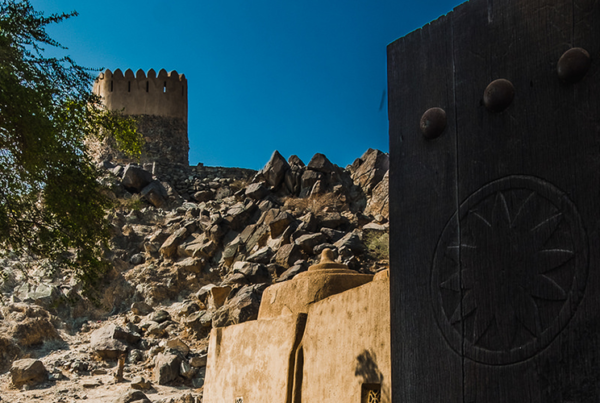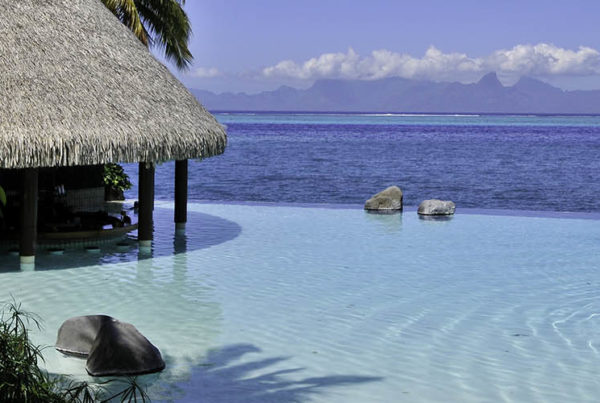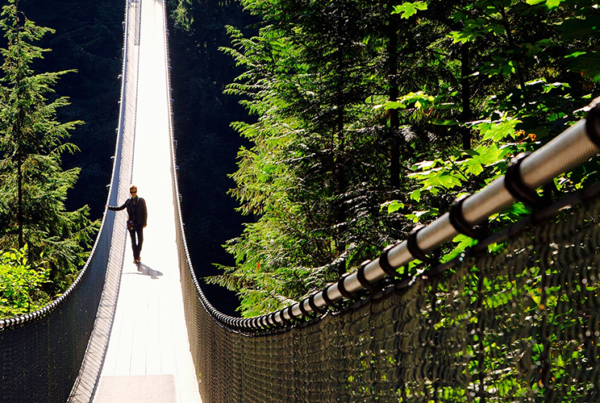Brussels, Belgium, traces its history to its founding in 979. Naturally, the city has more historical sites than many locations around the world. If you’re a history buff, make time for these seven historic attractions while you’re visiting the Belgian capital.
You’ll find them clustered around Brussels’ city center, close to local public transportation and popular hotels in the area. Research your hotel’s location before you leave to ensure it’s close to the historic attractions you want to see.
Town Hall
Grand Place
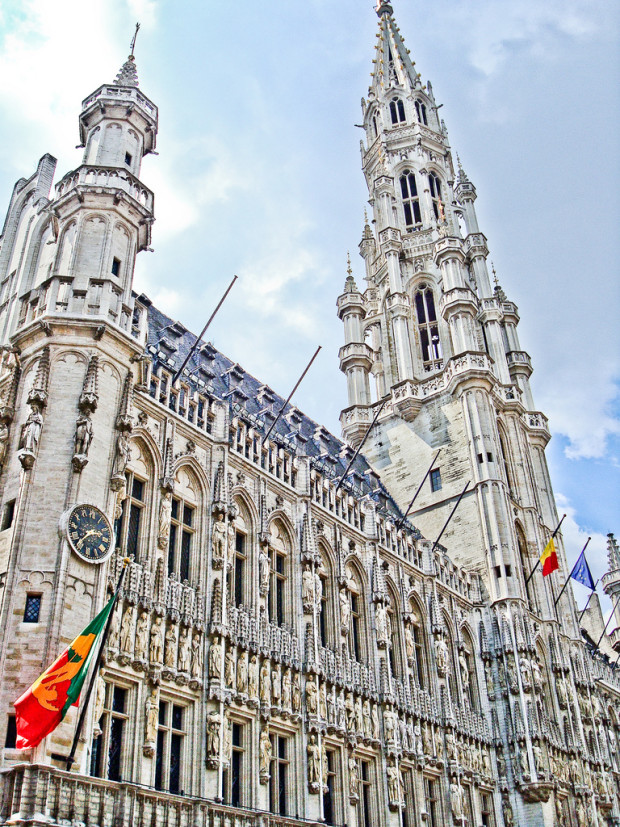
Image via Flickr by devasTated_cZar
The Brussels Town Hall dates to 1402, although the structure has been expanded several times since that date. Thankfully, with every new wing and tower addition, architects were careful to preserve the elegant Gothic style which delights visitors today. Many striking statues celebrating saints and noblemen adorn its exterior. These figures are reproductions of the original sculptures, which you can see in the nearby King’s House, also on the Grand Place.
The Town Hall is still used for council meetings and aldermen’s offices, but tourists are welcome to visit. Guided tours in English, Dutch, and French run Wednesdays and Sundays, except on public holidays. Tours cost €5 for adults and €3 for children ages 6 to 12, pensioners, students, and the unemployed. Children up to 6 years old can join the tours for free. Group tours are also available by appointment. Tickets for Town Hall tours are available from Grand Place’s tourist offices.
Manneken-Pis
Rue de l’Etuve
He stands at less than 25 inches tall, but the Manneken-Pis has made a big impression on the people of Brussels. Visitors flock to the urinating boy statue on Rue de l’Etuve. The figure has become something of a mascot for the Belgian capital. Most people don’t realize how lucky they are to see the statue today. Kidnapped twice in the 18th century, the statue was also smashed into tiny pieces in the 19th century. Thankfully, he’s urinated without incident since that time.
Cathedral of St. Michael and St. Gudula
Rue du Bois Sauvage 15, 1000
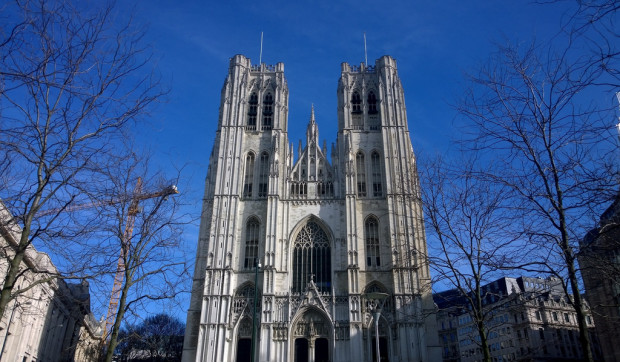
Image via Flickr by olivierbxl
The Cathedral of St. Michael and St. Gudula, perched high on the Treurenberg Hill, is a sight to behold. The originally Romanesque-style Roman Catholic church was built in the 11th century. Henry I ordered its two round towers added in the 13th century. Henry II commissioned a Gothic facelift in 1226, a refurbishment eventually completed in 1519. Architectural travelers may suggest the time was well spent. Here, you can marvel at the cathedral’s vaulted interior and colorful stained glass windows.
Visitors can explore the cathedral from 7 a.m. to 6 p.m. on weekdays, from 8 a.m. to 3:30 p.m. on Saturdays, and from 2 to 6 p.m. on Sundays. Admission is free. Guided tours are available by appointment.
Erasmus House
Rue du Chapître 31
Dutch scholar and theologian Erasmus stayed in the Belgian home of his friend Pieter Wychman in 1521. He might not have owned the property at Rue du Chapître 31, yet his profile christened Erasmus House when the structure became a museum in 1932. Some of Erasmus’ early manuscripts are on display, but the house celebrates the Renaissance era to a greater degree than the scholar himself. Visitors will find antiquarian books; artwork by Hans Holbein, Albrecht Dürer, and Quinten Metsys; vintage furniture, and more among its artifacts.
Erasmus House is open from 10 a.m. to 6 p.m. every day except non-public holiday Mondays. It’s closed on Christmas and New Year’s Day. Admission costs €1.25 for all visitors. Guided tours are available in English, Spanish, French, Italian, Dutch, and German by appointment.
Royal Greenhouses of Laeken
Koninklijke Parklaan
Palace guards won’t let you get too close to the Castle of Laeken, but for three weeks every spring, you can enjoy a glimpse of regal life when the Royal Greenhouses of Laeken open to the public. In 1873, acclaimed architect Alphonse Balat designed the greenhouses in the classical style. The pavilions, arcades, and cupolas are as majestic as anything intended for royal use.
The Royal Greenhouses of Laeken open for three weeks from April to May each year. The period varies, but date information appears on the Royal Belgian website. During your Belgium visit, you can visit the greenhouses any day except Monday during this time period. Admission costs €2.50 for adults and is free for children. This admission charge also includes entry to Queen Elizabeth’s workshop.
St. Hubert Royal Galleries
Galerie du Roi 5
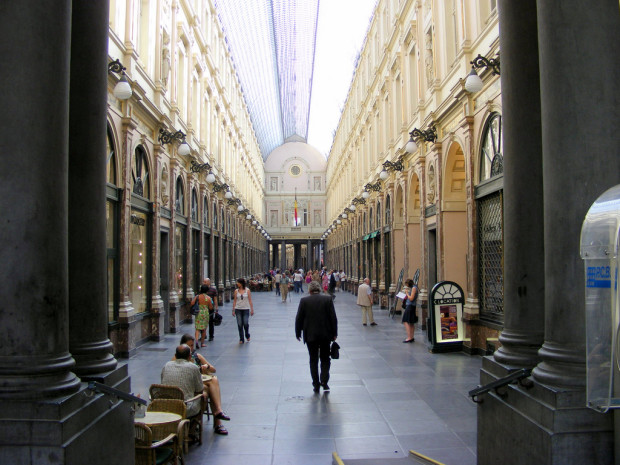
Image via Flickr by slasher-fun
St. Hubert Royal Galleries, or Galeries Royales Saint-Hubert as it’s known to locals, opened its doors in 1847, making this place one of the oldest shopping malls in Europe. Its visionaries intended the neo-Renaissance style complex to revive the dimly lit alleyways between the Rue du Marché aux Herbes and Rue Montagne aux Herbes Potagères. The galleries opened with the slogan “Omnibus omnia,” meaning “everything for everybody,” a motto which the arcade continues to strive for. St. Hubert Royal Galleries features a cinema, a theater, restaurants, big-name retailers, and specialized boutiques.
Originally, visitors had to pay up to 25 cents to enter the galleries, but today you can window shop for free. How much you spend at this historic site is entirely up to you.
A La Mort Subite
Rue Montagne aux Herbes Potagères 7
At the end of a busy day of sightseeing, the art deco-styled A La Mort Subite looks extra inviting. Its glossy dark wooden tables, brass adorned mirrors, and distinctive globe lights reveal that it’s one of the oldest taverns in Brussels. The tavern opened its doors in 1928, when local publican Theophile Vossen of La Cour Royale decided he needed a change of scenery. Today, you’ll find Vossen’s great-grandsons behind the bar continuing his legacy.
Given the A La Mort Subite’s age, it’s a shame not to try the traditional Gueuze beer. This distinctive local ale is brewed without yeast. A La Mort Subite also has a brassiere to satisfy your hunger pangs.
A La Mort Subite is open from 11 a.m. to 1 a.m. Monday to Saturday and from midday to midnight on Sundays. The tavern is closed on Christmas Eve, Christmas, New Year’s Eve, and New Year’s Day.
While Brussels has many wonderful historical sites, these seven attractions represent some of the city’s best attractions for first-time visitors.

